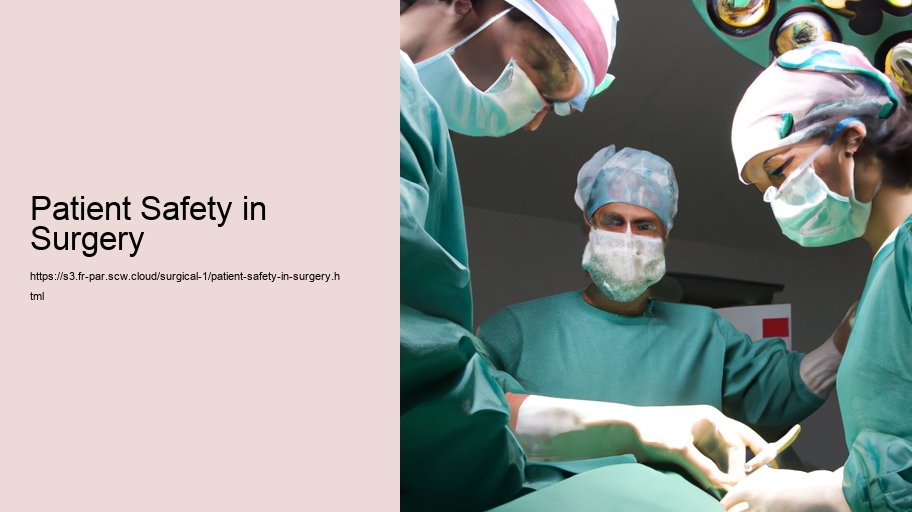Patient Safety in Surgery: An Essential Priority
Patient safety in surgery is a critical aspect of healthcare that demands the highest standards of care. Surgical procedures, by their invasive nature, carry inherent risks, but with the proper protocols, these risks can be minimized. The goal of patient safety is to prevent harm to patients during the course of surgical care, which requires a multifaceted approach involving healthcare professionals, hospital administrations, and patients themselves.
The importance of patient safety in surgery cannot be overstated. Every year, millions of people undergo surgical procedures with the expectation that they will receive safe and effective care. However, complications and adverse events can occur, some of which are preventable. These events can lead to increased morbidity, mortality, prolonged hospital stays, and additional costs to the healthcare system.
One of the foundational principles of patient safety in surgery is the adherence to strict surgical protocols. These protocols encompass a variety of guidelines, such as preoperative assessments, surgical site infection prevention measures, correct site surgery protocols, and appropriate sterilization techniques. By following these guidelines, surgical teams can ensure that they are taking every precaution to safeguard the well-being of their patients.
Communication among healthcare professionals is another pillar of patient safety. Surgery often involves a team of individuals, including surgeons, anesthesiologists, nurses, and other medical staff. Effective communication is vital to ensure that all team members are aware of the patient's medical history, the planned procedure, and any potential complications that may arise during surgery. Tools like the World Health Organization's Surgical Safety Checklist have been implemented in many operating rooms to ensure that critical steps are not overlooked and that there is a shared understanding among all team members.
In addition to clinical practices, the physical environment of the operating room must be designed with patient safety in mind. This includes maintaining sterile environments, ensuring that surgical instruments are in good working order, and that the layout of the room facilitates efficient workflow. The operating room should also be equipped with monitoring devices and emergency equipment that are readily accessible in case of an unforeseen event.
Patient involvement is also a crucial component of surgical safety. Educating patients about their procedures, including the risks, benefits, and expected outcomes, allows them to make informed decisions about their care. Patients who are well-informed are more likely to follow preoperative and postoperative instructions, which can significantly reduce the risk of complications.
Despite best efforts, not all adverse events can be prevented. Therefore, it is essential for healthcare institutions to have systems in place for reporting and analyzing these events when they do occur. This process allows for continuous learning and improvement in surgical practices. By understanding the root causes of adverse events, healthcare professionals can develop strategies to prevent future occurrences.
Training and education of healthcare professionals are also fundamental to maintaining patient safety. Surgeons and their teams must be proficient in the latest techniques and technologies. Ongoing education and simulation training can help surgical teams stay current with best practices and prepare them to handle unexpected situations during surgery.
In conclusion, patient safety in surgery is an essential priority that requires a comprehensive approach. By adhering to strict protocols, fostering effective communication, maintaining a safe operating environment, involving patients in their care, and committing to continuous improvement, healthcare professionals can ensure that the highest standards of surgical care are met. As surgery continues to advance with new techniques and technologies, the commitment to patient safety must remain at the forefront to protect patients and improve surgical outcomes.
